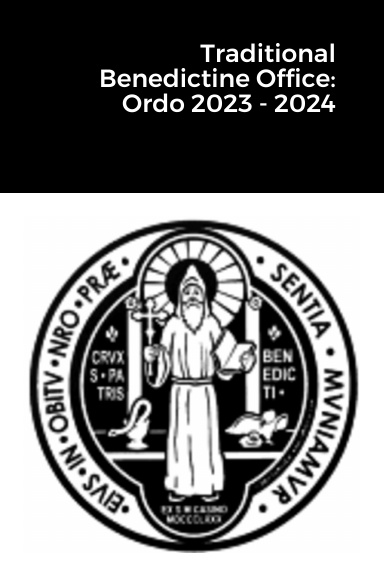 |
| Source: Gregobase |
I want to continue today, my series on the Matins responsories with a look at the second responsory for Tuesday in weeks I&II of Advent, Ante multum tempus, which offers a nice example of the use of responsories as keys to interpretation of the Scriptural texts. I also want to provide the first of a few posts looking at the history of the repertoire.
Here is the text of the responsory, laid out as it is sung.
R. Ante / multum tempus prophetávit Ezéchiel: Vidi portam clausam; † ecce Deus ante sæcula ex ea procedébat pro salúte mundi: * Et erat íterum clausa, demónstrans Vírginem, † quia post partum permánsit virgo. V. Porta quam vidísti, Dóminus solus transíbit per illam. R. Et erat íterum clausa, demónstrans Vírginem, † quia post partum permánsit virgo. | R. A long time ago, said Ezekiel the Prophet, I saw the gate shut: behold, God went forth from it before the ages for the salvation of the world. * And it was shut again, for it is a figure of the Virgin, in that after childbirth she remained a Virgin still. V. The Lord alone shall enter by the gate that thou savest. R. And it was shut again, for it is a figure of the Virgin, in that after childbirth she remained a Virgin still. |
The text of both the respond and the verse is based on Ezekiel 44:1-2, though with some obvious non-Scriptural glossing in the second part of the respond.
Here are the relevant verses from Ezekiel, with some of the verbal allusions to the responsory text highlighted:
Et convertit me ad viam portæ sanctuarii exterioris, quæ respiciebat ad orientem: et erat clausa. 2 Et dixit Dominus ad me: Porta hæc clausa erit: non aperietur, et vir non transibit per eam, quoniam Dominus Deus Israël ingressus est per eam: eritque clausa principi. Princeps ipse sedebit in ea, ut comedat panem coram Domino: per viam portæ vestibuli ingredietur, et per viam ejus egredietur.
And the Vulgate translation:
Then he brought me back the way of the gate of the outward sanctuary which looketh toward the east; and it was shut. Then said the LORD unto me; This gate shall be shut, it shall not be opened, and no man shall enter in by it; because the LORD, the God of Israel, hath entered in by it, therefore it shall be shut. It is for the prince; the prince, he shall sit in it to eat bread before the LORD; he shall enter by the way of the porch of that gate, and shall go out by the way of the same.
The interpretation of the text provided by the responsory is very conventional, reflecting a long line of exegesis on Ezekiel's text as references to Our Lady's perpetual virginity that can be found in St Ambrose, St Augustine and many other Fathers.
The doctrine itself, though, was formally defined at the Lateran Council of 649, and there is at least one other Advent responsory (which I'll come to, Bethlehem civitas) that may have come into the repertoire at this time to reflect that.
The history of responsories: oral transmission
You can find the chant for it at the top of the post, but it is worth keeping in mind that up until the tenth century (or thereabouts), as far as we know, the transmission of the responsory (and other) chants was entirely oral.
There are a few early sources that preserve the texts of responsories in different (mostly non-Roman, at least for the earliest sources) traditions, and rather more that just provide the initial words of the responsory (incipit) for the relevant season or feast, but the melodies associated with them had to be committed to memory and passed down through generations of singers.
The transmission process could be fragile at times and places: if almost the entire body of monks was wiped out by illness (as happened during St Bede the Venerable's childhood at Wearmouth-Jarrow), invasions or other factors, the sources might have to be reimported from outside.
That oral traditions could be preserved faithfully over relatively long periods, though, is attested to by the similarities in many chants from quite diverse regions when they were finally written down.
It represents an extraordinary achievement, particularly given that the responsory repertoire is far larger than that of Mass propers.
It has been estimated that in the seventh century, for example, there were around 200 responsories in use; the late tenth/early eleventh century (monastic) Hartker Manuscript contains around 600 responsories (annotated with neumes); but by the high middle ages the number had expanded to over 2000. By way of comparison, the 1963 breviary contains around 800 responsories.
A Benedictine link...
Today's particular responsory, Ante multum tempus, doesn't appear in all that many manuscripts - the Cantus database lists only sixteen, most of them allocating it to the Third Sunday of Advent.
Nor does it appear in the Old Roman manuscripts (which are thought to represent seventh century Roman practice).
It does, however, appear in one that has many similarities to them, suggesting it may date from the same period, and appears in a manuscript written in Rome in the eleventh century preserved in the Biblioteca Vallicelliana, C.5.
This particular manuscript was used until 1219 by the Benedictine nuns of San Sisto on the Via Appia. It was then taken to the (by then Benedictine) Monastery of Sant' Eutizio in Norcia, near St Benedict's birthplace. That monastery was originally founded in the fifth century by Abbot Spes and St Eutychius, both monks (along with other hermits who settled near Norcia around this time whom St Benedict may well have known) displaced from Syria by heresies there, mentioned in Book III of St Gregory's Dialogues (ch 38).




